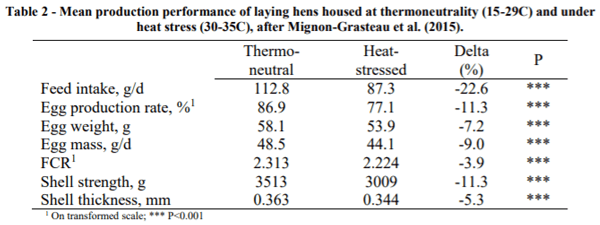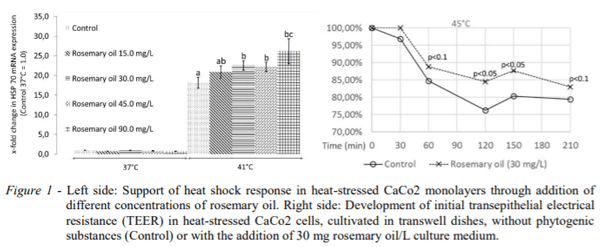I. INTRODUCTION
Over the last few decades, laying hen performance potential has largely been improved by genetic selection: egg production increased from 11.8 to 21.0 kg eggs per hen housed, FCR reduced from 3.29 to 1.96, mortality from 19.1 to 5.6% and body weight from 2.42 to 2.20 kg between 1970 and 2000 (Jeroch, 2011). Production cycles of 100 weeks without moulting will become commercially feasible based on improved laying persistence, although egg shell quality is still a key limitation, especially in older brown layers. Global egg production increased from 41.0 to 69.8 million tons between 1994 and 2014; 20.2 million tons of this increase (70%) was realised in the Asia-Pacific region (Windhorst, 2017).
The enormous increase in performance potential can only be realised with optimum nutrition, management and health. Studies have shown that highly productive layers of commercial breeds perform considerably better under optimal conditions than indigenous breeds, whereas performance is similar under low-input and environmentally harsh conditions (Pym, 2013). Therefore, trends like increased poultry production in (sub)tropical regions and changing from cage to non-cage housing systems, like barn and free-range systems in temperate zones, will challenge the production environment for these highly productive layers. This will require additional measures to improve bird resilience under sub-optimal conditions. Feed additives can improve nutrient digestion and utilization and support hen performance. At the same time, feed additives based on plant-derived bio-active compounds, like essential oils, herb extracts, oleoresins, tannins, and saponins, are still a rather newcomer to laying hen nutrition. They can improve hen production, not only by increased nutrient digestion, but also by supporting hens’ resilience against environmental and intestinal health challenges, e.g. via anti-oxidant and anti-inflammatory effects. However, it is important to standardise the content of the main active compounds in these natural feed additives to 1) ensure minimum effective concentrations, and 2) prevent too high concentrations of plant components that have potential anti-nutritional effects, like tannins and saponins.
II. NUTRIENT DIGESTION AND EGG PRODUCTION
The effect of a combination of pungent and bitter substances, essential oils and saponins (marketed as Biostrong®510, Delacon, Austria) on nutrient digestibility and production performance was tested in Lohmann Brown laying hens from 22 to 29 weeks of age (24 individually housed birds per treatment). Birds were fed a corn (42.7%) / wheat (25.0%) / soybean meal (19.0%)-based mash diet, supplemented with phytase and xylanase. The basal diet was optimised to meet the birds’ nutrient requirements and produced as one batch. Half of the diet was supplemented with the aforementioned phytogenic feed additive (PFA) composition (150 g/MT), whereas the other half was fed without. Production performances were measured weekly. At 29 weeks of age, ileal digestibility of crude protein, amino acids, fat, calcium and phosphorus was measured (pooled samples of three birds per treatment). Results are given in Table 1.

The PFA improved apparent ileal nutrient digestibility values significantly for protein and amino acids and numerically for the other nutrients, resulting in improved egg production and FCR. Positive effects of phytogenics on nutrient digestibility are related to increased activities of pancreatic and brush border enzymes by pungent and bitter substances in the feed (Platel and Srinavasan, 2004). Malayoglu et al. (2010) and Hashemipour et al. (2013) confirmed enhanced pancreatic enzyme activities in the intestine of 21-day old broilers by dietary supplementation of oregano essential oils or a thymol/carvacrol mixture, respectively. Reyer et al. (2018) found increased jejunal mRNA levels of peptide and amino acid transporters in 21-day old broilers after supplementing their diets with an essential oil blend from star anise, rosemary, thyme and oregano, quillaja saponins or a combinations, which are all part of Biostrong®510. These results could be further corroborated in an in vitro study with Caco-2 cells, incubated with the same phytogenic actives, showing a significantly increased transporter recruitment of SGLT1 and PEPT1 to the membrane by these phytogenics.
III. HEAT STRESS AND INTESTINAL INTEGRITY
Studies on the efficacy of phytogenic actives are often focused on anti-oxidant and anti-inflammatory effects. These modes of action confer the birds’ resilience to heat stress and are closely linked with intestinal integrity (Liu et al. 2016). Mignon-Grasteau et al. (2015) concluded in a meta-analysis based on 131 published papers that chronic heat stress in laying hens mainly affected feed intake, hen-day egg production, egg mass and egg shell strength (Table 2). The impact of heat stress was dependent on hen genotype, age and group size. In their study it was shown feed intake is already affected when ambient temperatures exceed 25°C.

High ambient temperatures induced oxidative stress in Hy-line brown hens, as shown by increased malondialdehyde levels in plasma, liver tissue and egg yolk. Heat stress inhibited follicle development mainly manifested as reduced egg production rate and ovary weight. In addition, progesterone production in granulosa cells, and follicle development were reduced and reactive oxygen species (ROS) levels increased (Yang et al., 2012). Adverse effects of heat stress could be alleviated by dietary supplementation with 250 IU/kg vitamin E as anti-oxidant (Yang et al., 2012). Others have shown that phytogenic actives like curcumin, ameliorated heat stress in quail via modulation of the Nrf2/HO-1 pathway and cellular repair mechanisms like heat shock protein (HSP) 70 levels (Sahin at el., 2012), whereas Mueller et al. (2012) showed in 35-day old broilers that sulforaphane (from broccoli extract), and essential oils from turmeric, oregano, thyme and rosemary stimulate the Nrf-2 driven anti-oxidant response element (ARE)-regulated genes, resulting in increased systemic anti-oxidant capacity. Apart from anti-oxidant efficacy, curcumin also exhibits anti-inflammatory effects via reduction of the inflammatory transcription factor nF-kß (Sahin et al., 2012), thereby affecting the oxidation-inflammation cascade. Anti-inflammatory effects of these phytogenic actives enable development of alternative natural feed additives promoting intestinal health as shown in broilers (Van der Klis et al, 2018).
Heat stress mediated damage to the intestinal barrier is responsible for increased morbidity and mortality of animals due to uncontrolled transfer of endotoxins across the intestinal wall (Pearce et al. 2013). Varasteh et al. (2015) indicated that HSPs play a crucial role in maintaining the localization of tight junction (TJ) proteins. During heat stress, an upregulation of TJ gene expression is observed to compensate for the loss of damaged TJ proteins (Pearce et al. 2013, Liu et al. 2016, Varasteh et al. 2015). Rosemary oil, as part of an essential oil mixture (Reyer et al. 2018) showed distinct benefits on preservation of transepithelial electrical resistance in CaCo2 cells, cultivated in transwell-dishes (Figure 1) in heat-stressed Caco-2 monolayers.
IV. CONCLUSIONS
Phytogenics (plant-derived bio-active compounds) have clear potential to support hen production by increased nutrient digestion and by anti-oxidant and anti-inflammatory effects. The latter are important modes of action to improve hens’ resilience against environmental and intestinal health challenges. Formulating phytogenic feed additives requires extensive in vitro screening, dose optimization and in vivo validation. Standardization of the contents of the main active compounds in these natural feed additives is crucial to ensure efficacy.
Abstract presented at the 30th Annual Australian Poultry Science Symposium 2019. For information on the latest edition and future events, check out https://www.apss2021.com.au/. 










.jpg&w=3840&q=75)